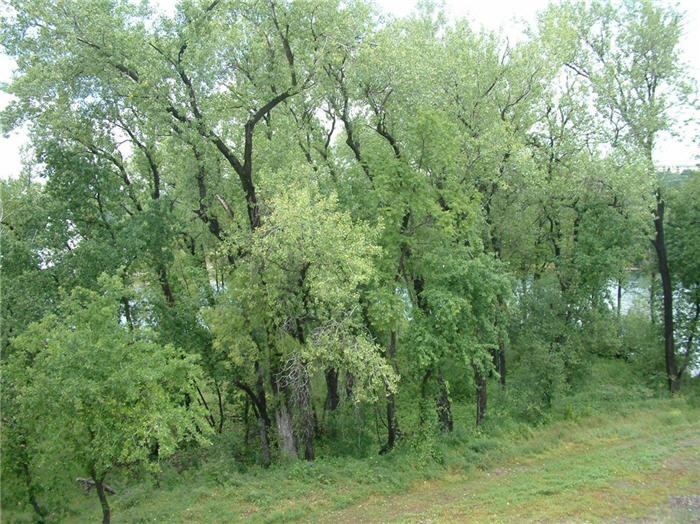| Botanical Name: Populus fremontii | |
| Common Name: Fremont Cottonwood |

-
Anatomy
-
Culture
-
Design
Plant Type
Tree
Height Range
40-60', 60-100'
Flower Color
n/a
Flower Season
Spring
Leaf Color
Green
Bark Color
Grey, Tan
Fruit Color
White
Fruit Season
Summer
Sun
Full
Water
Medium, High, Extra in Summer
Growth Rate
Fast
Soil Type
Sandy, Clay, Loam, Rocky, Unparticular
Soil Condition
Average, Rich, Poor, Well-drained, Moist
Soil pH
Neutral, Basic
Adverse Factors
Invasive
Design Styles
Ranch
Accenting Features
Fall Color
Seasonal Interest
Summer, Fall
Location Uses
Background, Park
Special Uses
Shade Tree, Naturalizing
Attracts Wildlife
n/a
Information by: Stephanie Duer
Photographer: Mountain States Nursery
Photographer: Mountain States Nursery
-
Description
-
Notes
Fremont cottonwood is a fast-growing tree, growing 50 to 60 feet tall and wide. Its bark is smooth and whitish when young, becoming brown and deeply furrowed in age. Females produce fuzzy, white cotton. Leaves are green, turning a brilliant yellow in the fall. This is a big tree, well suited to natural areas, parks, and riparian areas. Great wildlife value. A Utah native. There are male clones available that do not have cotton; some are planted at the Day-Riverside Library near the driveway entrance.
Grow in well-drained, alluvial, sandy to sandy-clay loams with varying degrees of organic matter, clay, or other fine soil and rock deposits.
Fremont cottonwood is found mostly along low elevation (seldom above 6,000 feet) stream channels that are constantly moist. It may also be scattered in moist valley bottoms. It is shade intolerant.